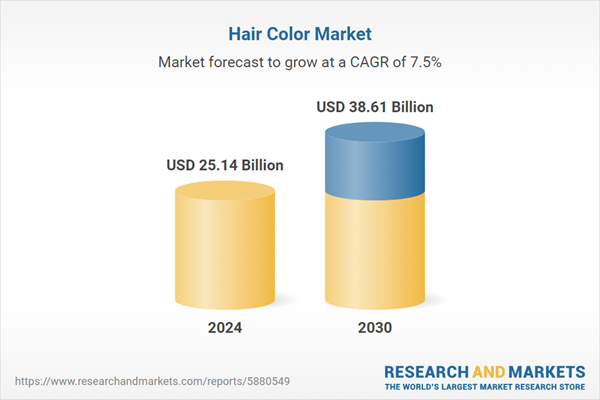Speak directly to the analyst to clarify any post sales queries you may have.
10% Free customizationThis report comes with 10% free customization, enabling you to add data that meets your specific business needs.
Additionally, the rapid expansion of e-commerce platforms and salon services is making hair color products more accessible, contributing significantly to the market’s global penetration and consumer reach. In the first half of 2024, China’s e-commerce sector surged, with online retail sales rising 9.8% year-on-year to nearly USD 996 billion, driving consumption recovery and fueling market expansion.
Key Market Drivers
Rising Beauty and Fashion Consciousness
The growing focus on personal appearance and fashion is a key driver of the global hair color market. Hair coloring is increasingly viewed not just as a solution for covering gray hair but also as a powerful form of self-expression and style enhancement. Rapid urbanization, broader social acceptance of frequent hair coloring, and the influence of evolving beauty trends are encouraging both men and women to explore bold and vibrant shades.Younger demographics, particularly millennials and Gen Z, are more drawn to fashion-forward looks, inspired by global beauty campaigns, celebrities, and social media influencers. With beauty consciousness now a lifestyle choice, hair color has transitioned from a niche product to an essential element of personal care, fueling steady market growth worldwide. In the United States, women spend an average of USD 3,756 annually on beauty products and services, significantly boosting demand in the market.
Key Market Challenges
Health and Safety Concerns Related to Chemical Ingredients
One of the most pressing challenges in the global hair color market is the increasing concern over the potential health risks associated with chemical-based formulations. Traditional hair dyes often contain harsh ingredients such as ammonia, parabens, peroxide, and synthetic fragrances that may cause allergic reactions, scalp irritation, or long-term hair damage. Prolonged exposure to such chemicals has also raised debates about possible links to more severe health issues, prompting regulatory scrutiny in several regions.Consumers today are more informed, carefully analyzing ingredient labels before making a purchase decision. This has created pressure on manufacturers to reformulate products without compromising color performance. However, developing ammonia-free or natural alternatives that deliver the same vibrancy and long-lasting effects remains costly and technically challenging. As a result, balancing consumer safety demands with performance expectations continues to be a major hurdle for industry players.
Key Market Trends
Growth of At-Home Hair Coloring Solutions
The rise of convenient, at-home hair coloring kits is another defining trend in the market. Busy lifestyles, rising service costs at salons, and the growing influence of do-it-yourself (DIY) beauty culture have made self-application products highly popular. During the COVID-19 pandemic, consumers worldwide shifted toward at-home hair coloring due to salon closures, and this behavior has continued post-pandemic due to convenience and affordability.Brands have capitalized on this trend by launching easy-to-use kits with no-drip formulas, precision applicators, and pre-mixed shades. In addition, subscription-based models and e-commerce platforms have made regular deliveries of hair dye products possible, further boosting consumer adoption. Virtual hair try-on apps and shade-matching tools are enhancing the at-home coloring experience by helping customers make informed choices before purchase. With more consumers opting for DIY hair coloring solutions, this trend is expected to remain strong, especially in urban markets where convenience is highly valued.
Key Market Players
- Shiseido Company, Limited
- The Procter & Gamble Company
- Coty Inc.
- L'Oréal S.A.
- Estée Lauder Companies Inc.
- Revlon, Inc.
- Avon Products Inc.
- Unilever PLC
- Combe Inc.
- Kao Corp
Report Scope:
In this report, the Global Hair Color Market has been segmented into the following categories, in addition to the industry trends which have also been detailed below:Hair Color Market, By Product Type:
- Permanent Hair Color
- Temporary Hair Color
Hair Color Market, By Type:
- Powder
- Cream
- Others
Hair Color Market, By Sales Channel:
- Supermarkets/Hypermarkets
- Departmental Stores
- Drug Stores & Pharmacies
- Online
- Others
Hair Color Market, By Region:
- North America
- United States
- Canada
- Mexico
- Europe
- France
- United Kingdom
- Italy
- Germany
- Spain
- Asia-Pacific
- China
- Japan
- India
- South Korea
- Indonesia
- South America
- Argentina
- Colombia
- Brazil
- Middle East & Africa
- South Africa
- Saudi Arabia
- UAE
- Turkey
Competitive Landscape
Company Profiles: Detailed analysis of the major companies present in the Global Hair Color Market.Available Customizations:
With the given market data, the publisher offers customizations according to a company's specific needs. The following customization options are available for the report.Company Information
- Detailed analysis and profiling of additional market players (up to five).
This product will be delivered within 1-3 business days.
Table of Contents
Companies Mentioned
- Shiseido Company, Limited
- The Procter & Gamble Company
- Coty Inc.
- L'Oréal S.A.
- Estée Lauder Companies Inc.
- Revlon, Inc.
- Avon Products Inc.
- Unilever PLC
- Combe Inc.
- Kao Corp
Table Information
| Report Attribute | Details |
|---|---|
| No. of Pages | 180 |
| Published | September 2025 |
| Forecast Period | 2024 - 2030 |
| Estimated Market Value ( USD | $ 25.14 Billion |
| Forecasted Market Value ( USD | $ 38.61 Billion |
| Compound Annual Growth Rate | 7.4% |
| Regions Covered | Global |
| No. of Companies Mentioned | 10 |









